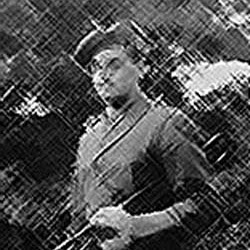Donald P Roy
age ~70
from The Villages, FL
- Also known as:
-
- Donald A Roy
- Don P Roy
- Donald P Pearl
Donald Roy Phones & Addresses
- The Villages, FL
- 4848 Laura Ln SE, Port Orchard, WA 98367
- 1424 West Ave, Port Orchard, WA 98366
- 4511 35Th Avenue Ct NW, Gig Harbor, WA 98335
- Belfair, WA
- Olympia, WA
- Centralia, WA
- Federal Way, WA
Work
-
Position:Protective Service Occupations
Resumes

Donald Roy
view source
Donald Roy
view source
Donald Roy
view source
Donald Roy
view sourceLocation:
United States
License Records
Donald J Roy
License #:
9014463 - Expired
Issued Date:
Oct 7, 1995
Expiration Date:
Jan 14, 2002
Type:
Salesperson
Isbn (Books And Publications)



The Reuniting of America: Eleven Multicultural Dialogues
view sourceAuthor
Donald H. Roy
ISBN #
0820431184



Plays by James Robinson Planche: The Vampire, the Garrick Fever, Beauty and the Beast, Fortunio and His Seven
view sourceAuthor
Donald Roy
ISBN #
0521284414


Name / Title
Company / Classification
Phones & Addresses
Director, President, Secretary, Treasurer
Dkn Investments, Inc
4919 162 St Ct E, Tacoma, WA 98446
Us Patents
-
Apparatus And Method For Associating A Geospacial Location To Content On A Network
view source -
US Patent:7805483, Sep 28, 2010
-
Filed:Jan 9, 2007
-
Appl. No.:11/651051
-
Inventors:Donald Le Roy Mitchell - Bellevue WA, US
-
Assignee:TeleCommunications Systems, Inc. - Annaplois MD
-
International Classification:G06F 15/16
-
US Classification:709203, 709202, 709245, 709246
-
Abstract:The format of the Presence Information Data Format—Location Object (PIDF-LO) as defined by the Internet Engineering Task Force (IETF) is extended or modified to accommodate, within the standard PIDF-LO format, an association of geospacial location to virtual content on the Internet. A filename of virtual content is associated with geospacial location information (either a specific location, zone, or direction). The filename is inserted into a section of a Presence Information Data Format-Location Object (PIDF-LO) compliant document as defined by the Internet Engineering Task Force (IETF). In this way, geospacial location information is associated with Internet based virtual content using a standard PIDF-LO format.
-
Geospacial Location Associated With Content On A Network
view source -
US Patent:8244802, Aug 14, 2012
-
Filed:Aug 16, 2010
-
Appl. No.:12/805696
-
Inventors:Donald Le Roy Mitchell - Bellevue WA, US
-
Assignee:TeleCommunication Systems, Inc. - Annapolis MD
-
International Classification:G06F 15/16
-
US Classification:709203, 709202, 709245, 709246
-
Abstract:The format of the Presence Information Data Format-Location Object (PIDF-LO) as defined by the Internet Engineering Task Force (IETF) is extended or modified to accommodate, within the standard. PIDF-LO format, an association of geospacial location to virtual content on the Internet. A filename of virtual content is associated with geospatial location information (either a specific location, zone, or direction). The filename is inserted into a section of a Presence Information Data Format-Location Object. (PIDF-LO) compliant document as defined by the Internet Engineering Task Force (IETF). In this way, geospacial location information is associated with Internet based virtual content using a standard PIDF-LO format.
-
Virtual Location Aware Content Using Presence Information Data Formation With Location Object (Pidf-Lo)
view source -
US Patent:8516043, Aug 20, 2013
-
Filed:Jul 12, 2012
-
Appl. No.:13/547183
-
Inventors:Donald Le Roy Mitchell, Jr. - Bellevue WA, US
-
Assignee:TeleCommunication Systems, Inc. - Annapolis MD
-
International Classification:G06F 15/16
-
US Classification:709203, 709202, 709245, 709246
-
Abstract:The format of the Presence Information Data Format-Location Object (PIDF-LO) as defined by the Internet Engineering Task Force (IETF) is extended or modified to accommodate, within the standard PIDF-LO format, an association of geospacial location to virtual content on the Internet. A filename of virtual content is associated with geospatial location information (either a specific location, zone, or direction). The filename is inserted into a section of a Presence Information Data Format-Location Object (PIDF-LO) compliant document as defined by the Internet Engineering Task Force (IETF). In this way, geospacial location information is associated with Internet based virtual content using a standard PIDF-LO format.
-
Ialert Enhanced Alert Manager
view source -
US Patent:20120157125, Jun 21, 2012
-
Filed:Dec 28, 2011
-
Appl. No.:13/338978
-
Inventors:Lance D. PITT - Kent WA, US
Thomas GINTER - Bellevue WA, US
Firdhaus ARYANA - Seattle WA, US
Donald Le Roy MITCHELL, JR. - Bellevue WA, US -
International Classification:H04W 4/02
-
US Classification:4554563
-
Abstract:iAlert_Enhanced_Alert_Manager enables a user to register an interest in their current location, as well as persons, places and/or things in which the user holds some regard. The iAlert_Enhanced_Alert_Manager provides notification and clarifying information to user's devices concerning events/happenstance that have occurred or are likely to occur within a proximity of registered persons, places, and/or things. The iAlert_Enhanced_Alert_Manager comprises data structures (e.g. an Affinity Table, a SPIN table, a SPIN-List Table, an Affinity-List Table, and a Keyword-List Table) to manage affinities, Spheres of Influence (SPINs), and relationships therebetween that may positively or negatively induce a person. Timely notification of events/happenstance to a user comprises the computation of iEvent-vectors and iAlert-vectors. An iEvent-vector contains fields pertaining to events/happenstance whereas an iAlert-vector comprises information pertaining to notifications. Transmission of a notification is determined as a function of the magnitude of an event/happenstance and the proximity of an event/happenstance to registered objects of interest.
-
Mobile User Information Selection And Delivery Event Based Upon Credentials And Variables
view source -
US Patent:20130128776, May 23, 2013
-
Filed:Nov 21, 2012
-
Appl. No.:13/683394
-
Inventors:Andrew Singer - Seattle WA, US
Donald Le Roy Mitchell, JR. - Bellevue WA, US
Firdaus Aryana - Seattle WA, US -
International Classification:H04W 4/16
-
US Classification:370259
-
Abstract:Dynamically selecting and facilitating stored caller information to a communications recipient device with a communications event, based on communication recipient credentials (e.g. IP address, MDN, etc.), preferences outlined in a subscriber profile associated with a relevant calling device, and other variables, e.g., time of day, location of calling device, etc. A subscriber is permitted to provision subscriber preferences and subscriber information associated with users of a subscribing communications device in to a subscriber profile, for use during a communications event. Subscriber preferences are defined to place restrictive conditions on stored subscriber information that may be transmitted with a communications event initiated by a corresponding communications device. A content collection node dynamically selects customized caller information via a subscriber information content collection process. Customized caller information is transmitted to appropriate recipient devices with a corresponding communication event.
-
Crowd-Sourced Resource Selection In A Social Network
view source -
US Patent:20130144949, Jun 6, 2013
-
Filed:Jun 4, 2012
-
Appl. No.:13/487648
-
Inventors:Donald Le Roy Mitchell, JR. - Bellevue WA, US
Thomas Ginter - Bellevue WA, US
Firdaus Aryana - Seattle WA, US
William M. Hughes - Bellevue WA, US -
International Classification:H04L 29/08
-
US Classification:709204
-
Abstract:A resource selection server that performs crowd-sourced resource selection over a social networking service, absent a central ratings database. A device subscribed to a social networking service implementing the inventive resource selection server, may register as a resource offering a particular skill. Additionally, any device subscribed to a relevant social networking service may transmit a skill request to the inventive resource selection server, to request a best-fit resource be returned for a particular skill of interest. The resource selection server queries a subscriber account database to identify resources on a social networking service, registered to offer a requested skill. The resource selection server additionally prompts subscriber devices within ‘n’ degrees of separation of a requesting device, to submit real-time trust ratings for resources complying with a particular skill request. The resource selection server analyzes ratings submitted by selected subscriber devices to return a best-fit resource for a particular skill request.
-
Employing Data From A Combination Of Cell Sectors
view source -
US Patent:20210368320, Nov 25, 2021
-
Filed:May 24, 2021
-
Appl. No.:17/328064
-
Inventors:- Bellevue WA, US
Donald Le Roy Mitchell, JR. - Bellevue WA, US -
International Classification:H04W 4/90
H04W 76/50
H04W 4/021 -
Abstract:A geospatial shape generator receives cell sector data for cell sectors, wherein the cell sector data characterizes geocoordinates of cell towers for the cell sectors and a radius of communication of each cell sector. The geospatial shape generator can generate a geospatial shape for the cell sectors. The geospatial shape server can also include a boundary coordinator that queries a Geographic Information System (GIS) for geographic coordinates for a particular region of interest within boundaries of each respective geospatial shape. The boundary coordinator can also determine a unique boundary for the particular region of interest, wherein the unique boundary is a combination of the geospatial shapes that encompass the particular region of interest. The geospatial shape server can include a call route control that routes emergency service calls that originate within the unique boundary to a particular network node of a public safety network.
-
Routing An Emergency Services Call
view source -
US Patent:20210250746, Aug 12, 2021
-
Filed:Feb 10, 2021
-
Appl. No.:17/172386
-
Inventors:- Bellevue WA, US
Donald Le Roy Mitchell, JR. - Bellevue WA, US -
International Classification:H04W 4/90
H04W 4/021
G06F 16/29
H04M 3/51
H04W 64/00 -
Abstract:A geospatial shape generator receives cell sector data for each of a plurality of cell sectors, wherein the cell sector data characterizes geocoordinates of a cell tower of each of the plurality of cell sectors, a radius of communication of each cell sector and a beam width of each cell sector. The geospatial shape generator can generate a geospatial shape for each of the plurality of cell sectors. The geospatial shape server can also include a boundary coordinator that queries a Geographic Information System (GIS) for geographic coordinates for each public interest structure within boundaries of each respective geospatial shape. The boundary coordinator can also determine an emergency region for each public interest structure of a plurality of public interest structures identified by the GIS. The geospatial shape server can include a call route control that provides a list of the plurality of public interest structures.
Plaxo

Donald Roy Dunn
view sourceOttawa, Ontario Canada.Well if I have to tell you!!! Just kidding!!!
Most people who know me agree that I'm quite the outdoors type of guy, and quite a survivalist. Nothing better... Well if I have to tell you!!! Just kidding!!!
Most people who know me agree that I'm quite the outdoors type of guy, and quite a survivalist. Nothing better then the outdoors and all the activities to do.
I am an average person, just like yourself, and a peaceful easy going person, who loves the...

Donald Roy
view sourceRed Lake MN
Classmates

Donald Roy
view sourceSchools:
Otisville High School Otisville MI 1981-1985
Community:
Quinton Akers, Janus Wehrman

Donald Roy
view sourceSchools:
Circle of Nations School Wahpeton ND 1985-1990
Community:
Timothy Kameroff, Dalonna Eder, Elena Simon

Donald Roy
view sourceSchools:
Secondaire Nepisiguit High School Bathurst NB 1968-1972
Community:
Linda Cormier

Donald Roy
view sourceSchools:
Baker Elementary School Pampa TX 1951-1952
Community:
Michael Gage, April Walkup, Christi Bedingfield

Donald Roy
view sourceSchools:
Mater Dolorosa School Holyoke MA 1970-1979
Community:
Linda Roy, Christine Crochetiere, Richard Stuart, Paul Hague

Donald Roy
view sourceSchools:
Mater Dolorosa School Holyoke MA 1975-1979
Community:
John Dick, Rick Sznicer, Leonard Los

Donald Roy
view sourceSchools:
Nashua High School Nashua NH 1991-1995
Community:
Nancy Gagnon, Charlotte Beaulieu, John Smith, Connie Sundblad, Rick Wilcox

Donald Roy
view sourceSchools:
Elm Street Junior High School Nashua NH 1991-1992
Community:
Nancy Gagnon, Charlotte Beaulieu, John Smith, Connie Sundblad, Rick Wilcox
Youtube
Myspace
Googleplus

Donald Roy

Donald Roy

Donald Roy

Donald Roy

Donald Roy

Donald Roy

Donald Roy

Donald Roy
About:
Retraité

Donald Roy
view source
Donald Roy
view source
Donald Roy
view source
Donald Roy
view source
Donald Roy
view source
Donald Roy
view source
Donald Roy
view source
Donald Roy
view sourceFlickr
Get Report for Donald P Roy from The Villages, FL, age ~70

















